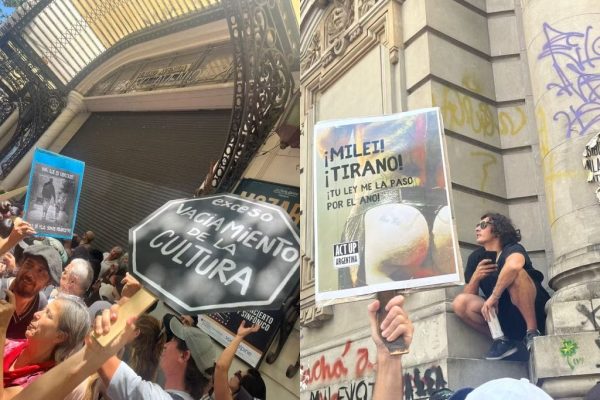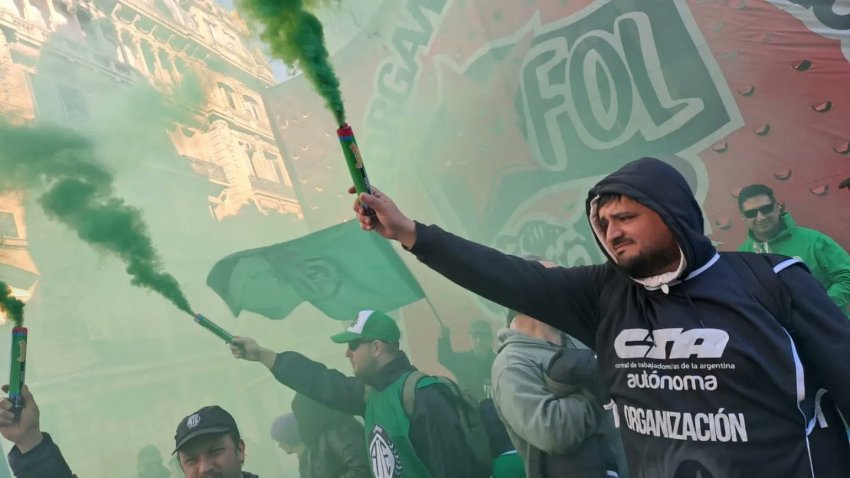Integration within the Pasadena Unified School District has been a focus of national attention since 1970.
By Nadra Nittle ,

Truthout is a vital news source and a living history of political struggle. If you think our work is valuable, support us with a donation of any size.
This story was originally published by The 19th.
Pasadena, California — After starting elementary school in the late 1960s, Naomi Hirahara and three other girls formed a clique called the C.L.A.N., an acronym that represented each of the girl’s first initials. Hirahara said she and her friends didn’t consider the racial implications of their group’s name until one of their fathers objected: “The Klan is very bad!”
The group consisted of Hirahara, who is Japanese-American, two Black girls and a White Jewish girl. They attended Loma Alta Elementary, a racially diverse school in Altadena, Calif., that stood out from many others in the Pasadena Unified School District (PUSD), especially its high schools, which were more racially homogenous.
“I really treasured the fact that we could form these interracial and intercultural relationships,” Hirahara said of her school, where, she recalled, students acknowledged racial differences, but weren’t fixated on them.
By 1970, the racial makeup of PUSD schools would command the attention of the entire country. A U.S. district court judge determined the school system had “knowingly assigned” students to schools by race and ordered it to desegregate based on the 1954 Brown v. Board of Education decision that “separate but equal” schools were unconstitutional. To racially integrate, PUSD launched what CBS News and The New York Times described then as the most substantial busing program outside the South.
Seventy years after the Brown v. Board decision on May 17, 1954, PUSD is still rebounding from the White flight that followed its desegregation order. More than 27,700 school-age youth live in Pasadena, Altadena and Sierra Madre, the communities served by the district, but only about half of them attend public school.
RELATED STORY

Here’s How Workers Can Build Power Amid Corporate Co-optation of DEI Programs
Since 2020, there has been a notable rise in anti-union consultants rebranding themselves as DEI practitioners.
By Peter Handel , TRUTHOUTMay 14, 2024
With 133,560 residents, Pasadena has one of the densest concentrations of private schools in the country, according to school officials. But the moms in the community who support public schools have organized to create a more equitable and diverse educational landscape.
They have teamed up with local educational organizations to advocate for the school district, and by extension, for racially and economically diverse schools. They have reached out to families with preschoolers, joined public school tours and gone door-to-door to reframe the narrative around PUSD. District officials, for their part, have expanded magnet and dual language immersion offerings, among other competitive programs, at schools to attract families from a wide range of backgrounds.
Families and officials have also worked together to educate realtors. It turns out that some of them dissuaded homeowners from enrolling children in PUSD, contributing to the exodus to private schools and, more recently, charter schools.
Changing negative perceptions that date back to school desegregation during the 1970s hasn’t been easy, they said. Back then, the backlash to the busing program occurred almost as soon as it started, with a recall campaign against school board members and a near 12-percentage-point drop in White student enrollment. Ronald Reagan, who was California’s governor at the time, stoked the fire when he signed legislation that prohibited busing without parental consent.
Today, advocating for Pasadena’s public schools is all the more challenging when considering that more than 40 private schools have been established in PUSD’s boundaries; the district has 23 public schools. In interviews, community members told The 19th that the proliferation of private schools has enabled White, middle- and upper-class families to evade public schools in the five decades since court-ordered desegregation.
“We really, truly haven’t recovered from the very pervasive belief in the area that PUSD schools are not up to snuff,” said Brian McDonald, who served as PUSD’s superintendent for nine years before stepping down in 2023.
California is not usually a place associated with segregation, though segregation has historically been a problem in the state. A 1973 report by the U.S. Commission on Civil Rights concluded that school segregation there and elsewhere in the West is frequently “as severe as in the South.” A report released last month by the Civil Rights Project at UCLA — “The Unfinished Battle for Integration in a Multiracial America – from Brown to Now” — ranked California as the top state in the country where Black and Latino students attend schools with the lowest percentages of White students.
“California has gone through a major racial transition,” said Gary Orfield, one of the authors of the report and the co-director of the Civil Rights Project at UCLA. “It was an overwhelmingly White state in terms of school enrollment at the time of the Brown decision, but it’s now, of course, a state that is overwhelmingly non-White in terms of student enrollment. That’s basically caused by tanking birth rates and immigration.”
Fueling segregation, Orfield said, is the fact that California has largely lacked state policies designed to racially balance schools since the 1960s and 1970s, when court orders brought about change.
In Pasadena, some residents say that the school district’s reputation is improving and more people want to invest and enroll their children in public schools. Although White and Asian-American students remain underrepresented in PUSD, the White student population has slightly increased over the past 20 years despite the drop in the city’s White population during that period.
After failed attempts, Pasadena voters have approved ballot measures to increase funding for local schools in recent years, enabling the district to make millions of dollars in upgrades. The district has also received national recognition for its academic programs, school tours are packed and young parents now tend to view diversity as an asset, its supporters say.
“Most school districts across the country have given up on integration. It’s not on the radar screen,” said Richard Kahlenberg, who has authored studies on PUSD and is director of housing policy at the Progressive Policy Institute, a think tank in Washington, D.C. “Pasadena, along with a number of other forward-looking communities, is trying to do something about that. They haven’t reached all their goals, but I’m inspired that there is a critical mass of parents who recognize the benefits of diversity for all students.”
During a recent information session for prospective public school parents, Nancy Dufford, executive director of the Pasadena Education Network (PEN), which works to get families involved in district schools, told the audience: “Probably, a lot of you were told when you moved here that you couldn’t send your kids to public school.”
She was stunned to find out that none of the families had actually heard such comments. It was the first time she had spoken to a group of parents who hadn’t been warned away. In Pasadena, Dufford said, it has been tradition for established families not to send their children to public schools. “So many people live here for long periods of time,” she said. “So you have generations of families here who have that message.”
The message ends up making its way to newer Pasadenans. Dufford said she heard it herself after becoming a mother in the 1990s, shortly after relocating to the city. In fact, PEN, the group she runs today, was started in 2006 by a group of preschool parents who had heard the same thing yet refused to listen.
They were among the parents who asked questions like, “Why do people say the schools aren’t good?”
Kimberly Kenne, president of the PUSD Board of Education and one of the founding members of PEN, said that she also wondered about this “pervasive narrative” when she moved to town in the early 1990s. She wasn’t aware of the bias against public schools in Pasadena, though her husband, who was raised in the city, attended private school when the desegregation order came down.
After their first child was born in 1997, Kenne considered enrolling him in the neighborhood public school — only to be admonished by fellow parents. “Are you sure you’re going to share the values of the other parents at public school?” she recalled them asking.
She enrolled her son in a private school, but changed her mind. One reason is that the school wasn’t equipped to meet his needs as a neurodivergent child. Another is that the private school lacked racial diversity in the student body, something that mattered to her.
Jennifer Hall Lee, vice president of PUSD’s Board of Education, also enrolled her daughter, who is now 20, in private school — regretting the decision when she realized her daughter didn’t seem comfortable interacting with people from a wide range of backgrounds.
Lee herself had gone to a public high school in Atlanta in the 1970s that had equal percentages of Black and White students. After switching her daughter to public school, Lee noticed that the child’s worldview changed.
“She would talk to me about the kids in the schools, from first-generation immigrant kids to foster youth,” Lee said. “She began to really understand the differences in socioeconomic status and understand that people lived in apartments and not everybody owned a home. She started understanding the full breadth of her community.”
In a city where the median home sale price is $1.1 million and the median household income is almost six figures, it’s confusing for newcomers to understand why the school system has a poor reputation since affluence in a community typically translates into quality in its public schools.
Pasadena, however, has become known as “a tale of two cities,” a place where the gap between the rich and the poor has only widened and the two groups don’t mingle socially or academically. At $97,818, the median household income is just above the state’s and $23,000 above the nation’s. At the same time, the city’s poverty rate of 13.4 percent is slightly higher than the state and national rate.
When the school district’s critics mention that its test scores are lower than those in surrounding school systems, supporters respond that the city has a wealth gap that’s largely absent from the more homogeneous neighboring suburbs. Many of the detractors, Dufford said, are also unaware that PUSD’s “bad” reputation coincided with the 1970 desegregation order that accelerated the departure of White, middle- and upper-income families from the district.
White flight out of Pasadena has been traced back as far as the 1940s. The reasons include lower birth rates among White families, an economic downturn in the aerospace industry that limited employment opportunities and the restructuring of neighborhoods to make way for freeways. By 1960, the racial demographics of the city were also changing, with communities of color expanding rapidly. The next year, PUSD lost about 400 students when the mostly White community of La Cañada broke away from the district to form its own separate school system, which to this day is ranked as one of the state’s best. In 1976, La Cañada Flintridge became its own city.
“The fact that people are willing to create whole new municipalities, so they don’t have to integrate — that should really wow people,” said Shannon Malone, PUSD’s senior director of principals, who added that her views were not the school district’s but her own. “You would rather create a whole new city than to let your child sit next to a person of color. I don’t think people have a full understanding of that at all.”
Having lived through the desegregation order, Hirahara, who is now an award-winning mystery writer, wishes more people knew about the history of the city’s schools. In 2016, she received a grant from the Pasadena Arts & Culture Commission and the City of Pasadena Cultural Affairs Division to present “Loma Alta: Tales of Desegregation,” a talk at a public library that featured her and two other district alumni sharing their experiences.
“So many people don’t even know that it was the first West Coast school district to get the order to desegregate, so it’s a very unique and telling experience of why we’re still dealing with issues of race today,” Hirahara said.
When Hirahara was enrolled in Loma Alta, about half of its students were Black. It was one of Pasadena’s top-performing elementary schools, which the 1973 report from the Civil Rights commission attributed to the fact that many of the students came from middle-class households. Other high-achieving schools in the district with large Black populations included Audubon Primary School and John Muir High School. Six students at John Muir were accepted into the elite California Institute of Technology (Caltech) in 1972, a rare feat that prompted Caltech’s then-president to write about the accomplishment in the local newspapers.
The Brown v. Board decision had the unintended consequence of costing tens of thousands of Black educators their jobs as many White schools did not want to employ these teachers and principals after integration. The consequences have endured for decades. In 2021, about 15 percent of public school students nationwide were Black, but only 6 percent of public school teachers nationwide were, according to a forthcoming report by the Southern Education Foundation, a nonprofit that works to advance equitable education policies.
Malone, who is Black and was bused to schools in Los Angeles, underscored the results of studies that show that students of color excel when they have Black teachers, demonstrating better academic and behavioral outcomes. But when Black children attend integrated schools, their support systems don’t usually accompany them, she said.
The achievements of students at racially diverse schools in the district didn’t stop the parents bent on leaving PUSD from doing so, administrators complained to federal officials in 1973. The biggest obstacle preventing the district from truly becoming integrated, the administrators said, was “white flight.” The Civil Rights commission’s report quoted one administrator making a remark that could have come from a PUSD supporter today: “White parents don’t take time to see whether the system is bad or not. They simply listen to people who criticize the district without foundation.”
What’s different is that now the district has an army of moms actively challenging these attitudes. Victoria Knapp is one of them, but it took time and trust in herself before she became a public school crusader.
When Knapp entered grade school in Pasadena in the 1970s, she heard that children her age were being bused from one neighborhood to another, but she didn’t understand why it was being done or what it was like. Knapp did not attend the city’s public schools.
“My schools were predominantly White, predominantly Catholic and predominantly middle class or above,” she said.
She had some familiarity with public schools because her mother taught for the Los Angeles Unified School District, but she didn’t know that a contentious debate about integrating them had unfolded in her own community. Years later, after the birth of her older son, she felt pressure from fellow moms to send her children to private school. The aversion to public school in her moms’ group made her reflect on her city’s past. She thought to herself: “You mean to tell me that whatever was going on here 40 years ago is still going on?”
Still, her Catholic school upbringing and the nudging from the private school enthusiasts led Knapp, chair of the Altadena Town Council’s executive committee, to rule out PUSD. First, she and her husband enrolled their eldest son in a parochial school. Then they tried a nonsectarian private school. The couple felt that both schools exposed their children to experiences and behaviors they did not appreciate, like the sense of entitlement expressed by some of their classmates. Knapp, for the first time, began to consider an alternative.
“It did seem counterintuitive to me that I was going to have this relatively homogenous group of moms dictate what we were going to decide for our own kid,” she said.
After touring PUSD schools, Knapp questioned the idea that they were inferior to the city’s private schools. She wondered, “What’s not good? Is it that our public schools are predominantly Black and Brown children?”
When some parents raised safety concerns, she responded that elementary schools aren’t typically dangerous and that fights, gun violence and truancy occur at private and public schools alike. “They could never really articulate what safety meant,” Knapp said. “What safety meant was they didn’t want their child in an integrated, diverse school. They just didn’t. And that’s exactly where I wanted my privileged White sons to be.”
Both of her sons, a 6th grader and an 11th grader, have now attended public school for years. Her younger son attended Hall of Famer Jackie Robinson’s alma mater, Cleveland Elementary School.
Knapp became an active PUSD parent, serving as a PTA president at Altadena Arts Magnet, the school her younger son attended next, and an ambassador for the Pasadena Education Network, a role that has her regularly participate in school tours. Going on tours allows her to field questions from prospective parents. What the families see often surprises them, Knapp said.
“They think they’re going to see chaos and mayhem, then they come in,” she said. “Altadena Arts is an inclusion school, so kids of all neurodiversities are included in the same classroom. It’s socioeconomically diverse, it’s racially diverse, it’s gender diverse, it’s very integrated. You walk up there and it’s like, ‘This is what a school should look like.’”
Karina Montilla Edmonds, who moved to Pasadena in 1992 to attend Caltech, never doubted the city’s public school district. When her now 22-year-old daughter was entering kindergarten, Edmonds and her former husband turned down the chance to send her to the neighboring San Marino Unified School District (SMUSD), which ranks as one of the state’s Top 10 school systems. Her then-husband taught for SMUSD, qualifying their eldest daughter for an interdistrict transfer to the suburb where the median household income is $174,253 and more than 85 percent of students are proficient in reading and math.
Edmonds wasn’t interested. “At the time, I was like, ‘That’s not my school. That’s not my community. I have a school two blocks away. Why wouldn’t I go there?’”
The decision appalled many of her fellow parents. “People thought I was nuts,” she said. “Luckily, I have a PhD in aeronautics from Caltech, so they knew I wasn’t stupid, but they definitely thought I was crazy.”
The mom of three from Rhode Island didn’t fear that her children wouldn’t get a good education in Pasadena’s public schools because she excelled in the public education system in her state while growing up in a household of few resources, raised by parents with limited formal education. “I thought I was rich because everybody around me was on public aid,” she said. When she attended a competitive public high school, she learned just how economically disadvantaged her family was. “I was like, ‘Oh, wait, I’m poor.’”
She now serves on the board of the Pasadena Educational Foundation, a nonprofit focused on developing community partnerships to help the city’s public schools excel. The organization also works with the Pasadena-Foothills Association of Realtors to educate real estate agents about the public schools since some realtors had a history of discouraging homebuyers from enrolling their children in PUSD. McDonald, the former superintendent, said that it happened to him when he was buying a home several years ago.
“She advised me to put my kids in every other school and district except for PUSD,” he said. “But I’m happy to say that through the efforts of the district and the Pasadena Educational Foundation, primarily utilizing the realtor initiative, we were able to change a few minds.”
Edmonds agrees that educating realtors is an important step. Her perspective on public schools and the surrounding communities, she added, also comes from the fact that her ex-husband taught in Pasadena before San Marino. Was he suddenly a better teacher because he moved from a less affluent school district to a more affluent one? She didn’t think so. She also didn’t compare the two district’s test scores because their populations are different. Pasadena Unified has significantly more low-income students, foster youth, English language learners and Black and Brown students than San Marino Unified, which is predominantly White and Asian American.
“To me, that’s part of the enrichment of getting to be with and learn from a broader part of our community,” she said, adding that children don’t suffer because they attend school in diverse environments.
The idea of seeking out or avoiding schools based on demographics concerns her.
“I feel like our democracy depends on an educated population,” she said. “I think every child should have access to excellent education and have an opportunity for success because I know the opportunities that I had given to me through the public school system.”
The year after McDonald became the PUSD superintendent in 2014, he wrote a column in the local paper describing the difficulties the district was experiencing because of the high percentage of parents sending their children to private school. He estimated that the district was losing out on about $14 million because of declining enrollment, money that could help PUSD prevent school closures, teacher layoffs and cuts to student services.
But he also touted the district’s variety of programs for students such as dual language immersion schools and International Baccalaureate, as well as the piloting of a dual enrollment program with the local community college. Since then, the district has expanded its initiatives and created new ones. In addition to Spanish and Mandarin, the district’s dual language immersion tracks now include French and Armenian. From 2013 to 2022, PUSD also received three federal magnet assistance program grants that allow it to bring more academic rigor to its schools.
“We lose enrollment because people have a negative perception of our schools, so I think the idea of a magnet theme, whether it’s arts or early college, or a dual-language program, can really get people excited about something that their students are really interested in or maybe a value that their family has, let’s say, around the arts,” said Shannon Mumolo, PUSD’s director of magnet schools, enrollment, and community engagement. Schools with themed magnet programs, she added, can sway families who weren’t interested in PUSD to consider at least going on a school tour.
Enrollment at PUSD’s John Muir High School has increased since it became an Early College Magnet in 2019, Mumolo said. Across the board, enrollment of students from underrepresented groups — White and Asian American — have gone up since the school district expanded its academic programs over the past decade.
“But I also want to make sure to emphasize that the schools have maintained their enrollment of their Black and Latino students,” Mumolo said. “We want to make sure that we’re keeping our neighborhood students and maintaining enrollment for those groups.”
The former superintendent also touts PUSD’s Math Academy, which The Washington Post in 2021 lauded as “the nation’s most accelerated math program.” The course allows gifted middle school students to take classes, such as Advanced Placement Calculus BC, that are so rigorous that only a small percentage of high school seniors take them.
Kenne, the school board president, said that her children, now both in their 20s, were gifted math students. The Math Academy was not available when they were in grade school. She and her husband switched them out of PUSD in high school, in part, because at the time they had more opportunities to excel in math in private school, she said, acknowledging that it was a controversial choice for a parent who advocates for public education.
“People do have reasons,” Kenne said of some parents who choose private school. But she also said that private school overall wasn’t especially rigorous for her children. “My son calculated that he didn’t need to do homework for some classes to get a decent grade,” she said.
By introducing a wide variety of academic programs, including in math, PUSD has challenged the gap between what outsiders perceive it to be and what the district actually is, according to McDonald. “I think if we had not implemented those programs, the declining enrollment would have been much more acute,” he said.
Kahlenberg, the researcher, agrees. He said data suggests that when middle-class families get the right incentives to go to a public school, even one that’s outside their neighborhood, they do.
Since the busing integration program did not succeed in the district, Kahlenberg, in his studies of the school district, recommended that PUSD take creative approaches to lure in middle-income families. That includes introducing unique academic programs as well as developing or deepening partnerships with institutions in or around Pasadena — Caltech, NASA Jet Propulsion Laboratory, the Pasadena Playhouse, Art College Center of Design, the Norton Simon Museum, the Huntington Library.
But the focus on winning parents back has led to some tensions, Kenne said.
“Sometimes a message that we’ve heard in the last 10, 20 years is do we care more about marketing to the people who don’t come to our district, or working hard for the people who are already here?” Kenne said. “Because sometimes the public-facing message seems to be all about getting kids back, and it makes the people in the system go, ‘Am I not important to you? I’m already here.’”
Nationwide, Black students who attended school in the late 1960s were more likely to be in integrated classrooms than Black youth today. Supreme Court decisions, such as 1991’s Board of Education of Oklahoma City v. Dowell and 2007’s Parents Involved in Community Schools v. Seattle School District No. 1, have contributed to the resegregation of the nation’s schools by phasing out court-ordered busing and making it harder to racially balance schools, according to experts.
Kahlenberg said schools nonetheless have a duty to continue trying to integrate — if not by race, then by class.
“The children of engineers and doctors bring resources to a school, but so do the children of recent immigrants or children whose parents have struggled,” Kahlenberg siad. “The more affluent kids benefit as well from an integrated environment. When people have different life experiences they can bring to the discussion novel ideas and new ways of thinking, and that nicely integrated environment is possible in a place like Pasadena.”
Hirahara, for one, still cherishes her childhood in the school district, back when she befriended the girls in the C.L.A.N. As schools across the nation have largely re-segregated, she fears that too few young people get to experience what she did.
“I’m so glad that I had that kind of upbringing,” she said, “and I think it prepared me better for life.”
NADRA NITTLE is education reporter at The 19th. She was previously a senior reporter for Civil Eats and a staff reporter for Vox Media and the Long Beach Press-Telegram, where she covered K-12 education. She has a master’s degree in teaching, and her writing has also appeared in publications including The Guardian, Business Insider, The Atlantic, BBC News, NBC News and EdSource.
















